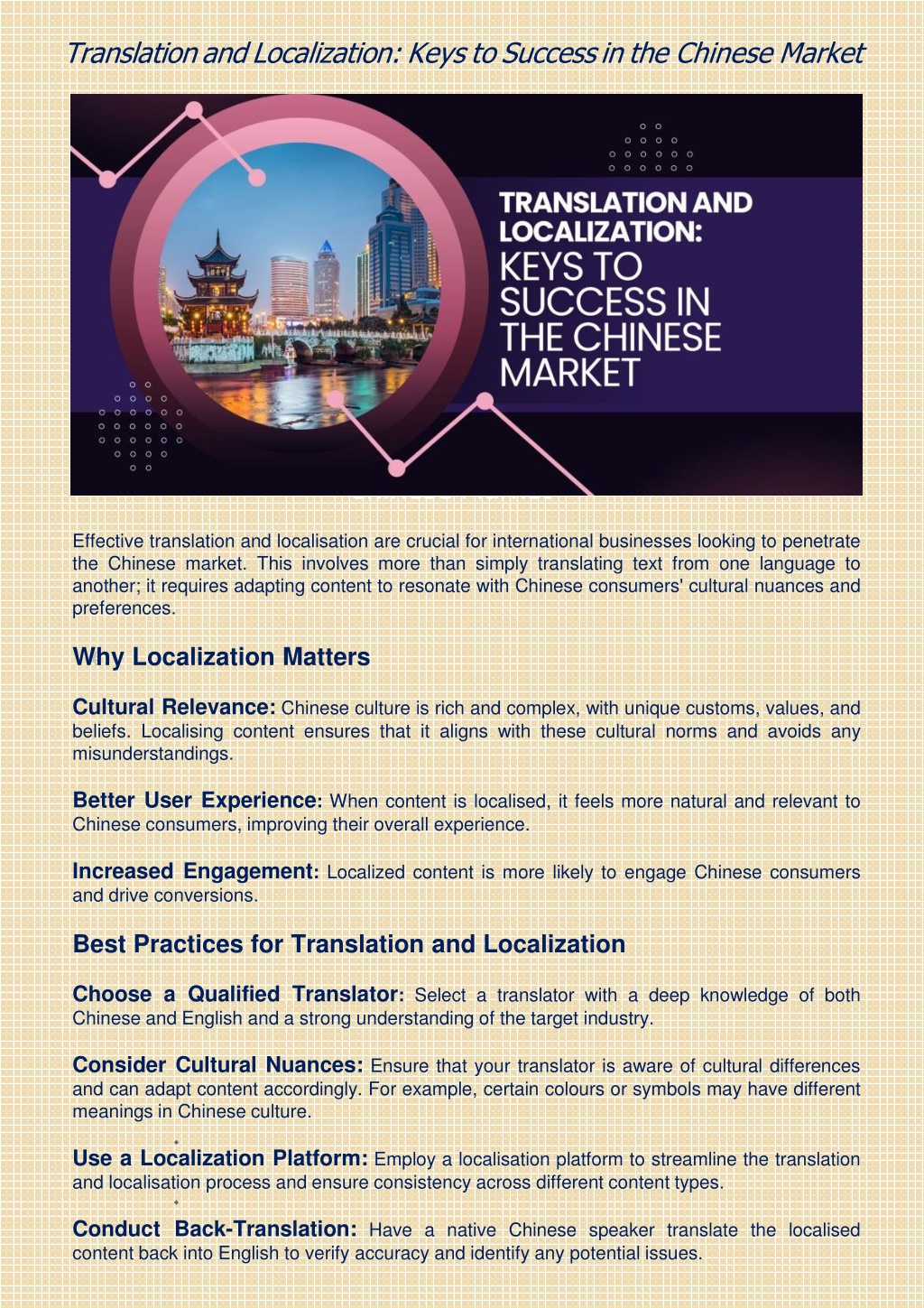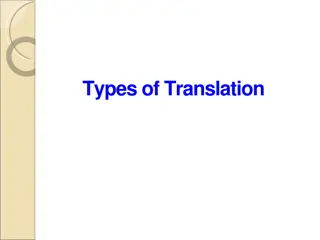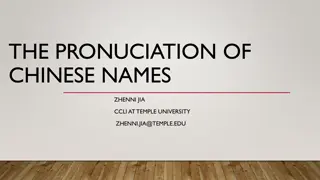Translation and Localization Keys to Success in the Chinese Market
Effective Translation and Localisation are crucial for international businesses looking to penetrate the Chinese market. This involves more than simply translating text from one language to another; it requires adapting content to resonate with Chine
Uploaded on Nov 16, 2024 | 2 Views
Download Presentation

Please find below an Image/Link to download the presentation.
The content on the website is provided AS IS for your information and personal use only. It may not be sold, licensed, or shared on other websites without obtaining consent from the author. Download presentation by click this link. If you encounter any issues during the download, it is possible that the publisher has removed the file from their server.
E N D
Presentation Transcript
Translationand Localization: Keys to Successin the Chinese Market O C T O B E R 1 8 Translation and Localization: Keys to Success in the Chinese Market Effective translation and localisation are crucial for international businesses looking to penetrate the Chinese market. This involves more than simply translating text from one language to another; it requires adapting content to resonate with Chinese consumers' cultural nuances and preferences. Why Localization Matters Cultural Relevance: Chinese culture is rich and complex, with unique customs, values, and beliefs. Localising content ensures that it aligns with these cultural norms and avoids any misunderstandings. Better User Experience: When content is localised, it feels more natural and relevant to Chinese consumers, improving their overall experience. Increased Engagement: Localized content is more likely to engage Chinese consumers and drive conversions. Best Practices for Translation and Localization Choose a Qualified Translator: Select a translator with a deep knowledge of both Chinese and English and a strong understanding of the target industry. Consider Cultural Nuances: Ensure that your translator is aware of cultural differences and can adapt content accordingly. For example, certain colours or symbols may have different meanings in Chinese culture. Use a Localization Platform: Employ a localisation platform to streamline the translation and localisation process and ensure consistency across different content types. Conduct Back-Translation: Have a native Chinese speaker translate the localised content back into English to verify accuracy and identify any potential issues.
Seek Feedback: Gather feedback from Chinese consumers to assess the effectiveness of your localised content and make necessary adjustments. Common Challenges and Solutions Language Variations: Cantonese, and Wu. Consider which dialect is most relevant to your target audience and ensure that your content is translated accordingly. Chinese has several regional dialects, including Mandarin, Cultural Sensitivity: Be mindful of cultural sensitivities and avoid any content that could be offensive to Chinese consumers. Technical Challenges: Technical terms and concepts may not have direct equivalents in Chinese. Work with your translator to find appropriate translations or explanations. By following these best practices and addressing common challenges, you can effectively translate and localise your content for the Chinese market and increase your chances of success. Address - 1 Coleman St. #05-02B The Adelphi, Singapore 179803 Phone No - +65 6576 0138 Email id - inquiry@translationsingapore.com Website - https://www.translationsingapore.com/























